Archivist's Notes #1 | Ways of Knowing
by Michiel Teeuw
In this introductory note, I will expand on the different roles of knowledge in MONSTER ARCHIEF - exemplified by artworks which embody those knowledges.
No. 1a: Novel Knowing
What does it mean to do memory and heritage work, without any substantial education or training in histori(ographi)c principles and methodological practice? In a conversation with Yasmin Ghaemmaghami, we came up with the term “Novel Knower”. Let’s say a Novel Knower is someone who is newly arrived, and with that has a specific kind of knowledge. For example, Yasmin mentioned they would be interested to receive tours from people who arrived in a city just minutes ago. But you can also think of learning a new language, acquiring a new skill, getting to know a new love, etc. Different kinds of knowledge that could be associated with the Novel Knower:
-
First impressions
-
Culture shock
-
Disorientation
-
Having a crush
I love the open-mindedness that comes with traversing the not-yet-known(1). I feel most like myself when I calmly and attentively enter a state of curious resonance. When I visit a country which is yet unknown to me, I’m very sensorially aware. I notice all the sights, sounds, smells, textures, tastes that the country, or its residents, offer to me. I also have a sort of culture shock, its size respectively dependent on the size of the cultural difference I encounter. And in my hometown, Groningen, the international students who newly arrive share their impressions, of matters which were hardly visible to me. When you stay in a place for long, everything tends to become normal. As philosopher Sara Ahmed writes, a reality is given by becoming background, as that which is taken for granted.(2)
No. 1b: Assemblies

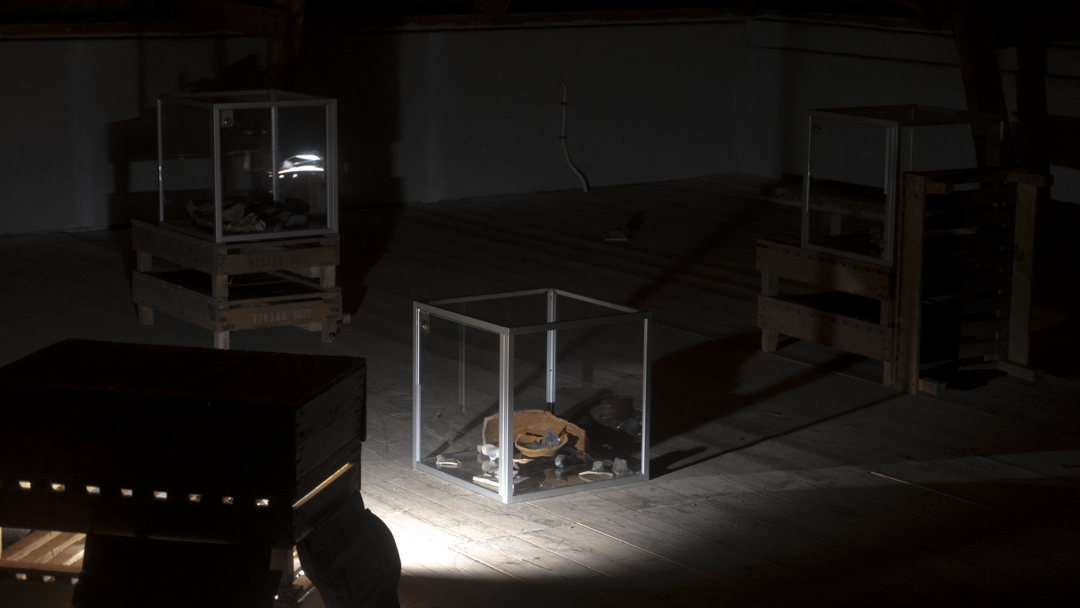
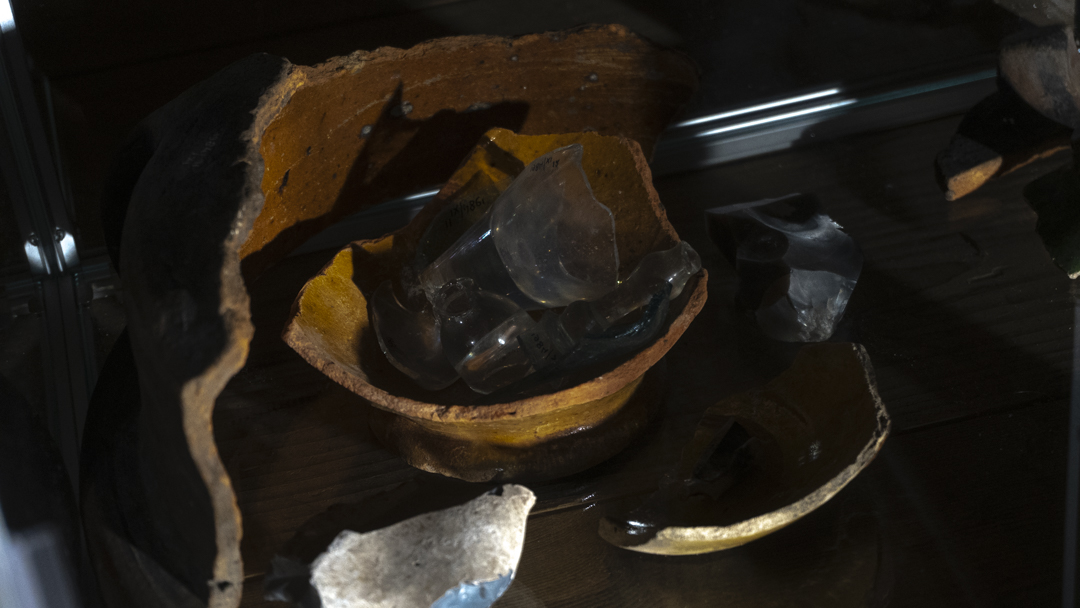
In my installation Assemblies (2023) I worked with the archaeological findings from the former house of Rudolf de Mepsche, the mayor who sentenced the 21 homosexuals to death. His house was an important site of the process, as both the process took place there and the prisoners were held captive in its basement. The regular archaeological approach consists of dividing the found materials into different groups based on the archaeological strata and material types. My approach resisted mastery.(3) In finding an artistic way of displaying the materials, I combined materials into small monstrous and wondrous hybrids, mysterious in their appearance and contents.
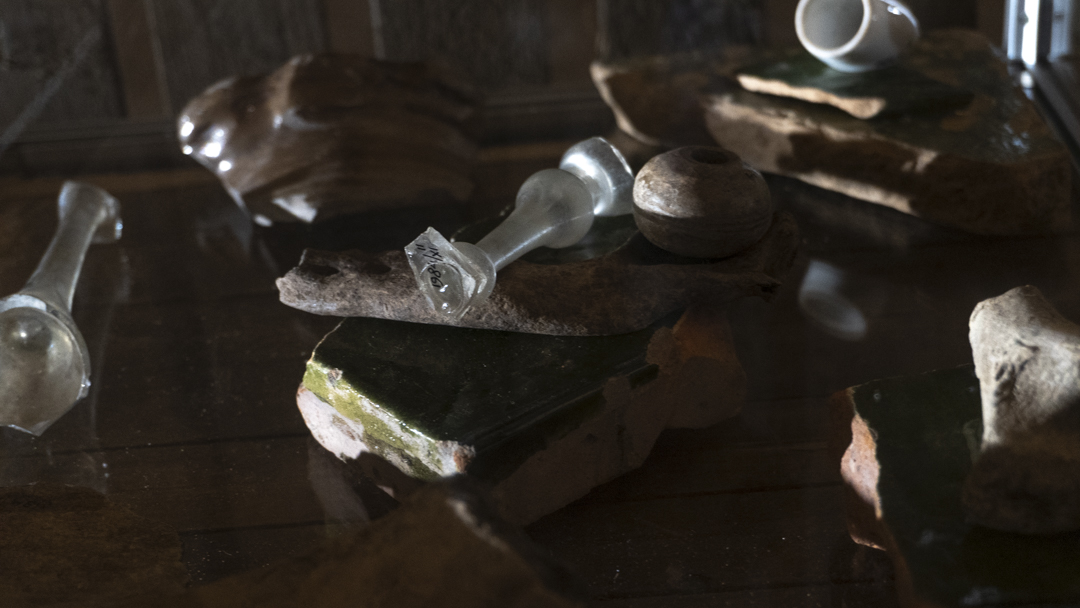
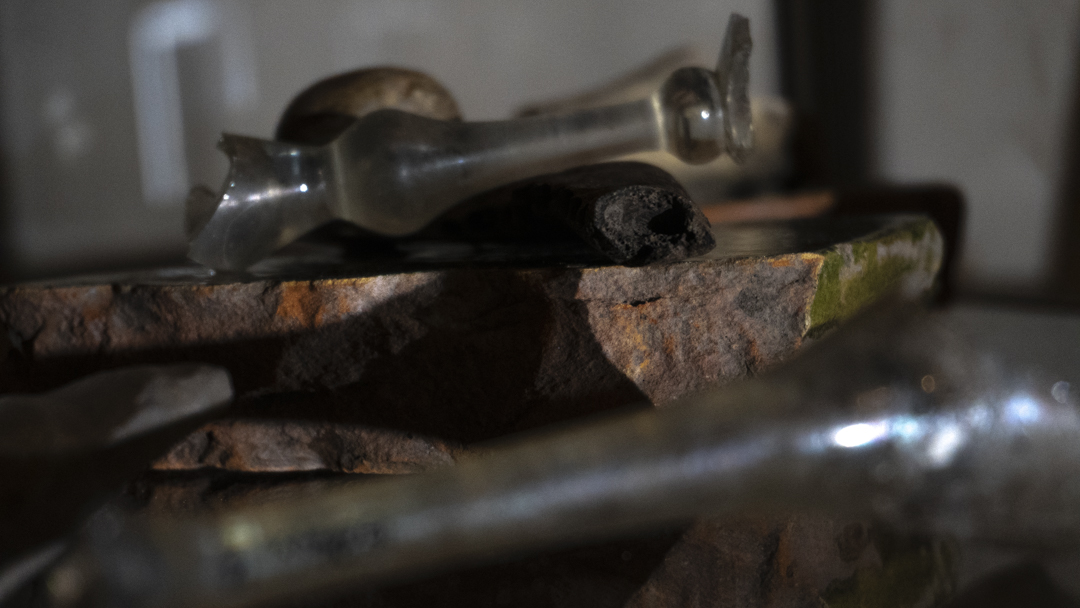
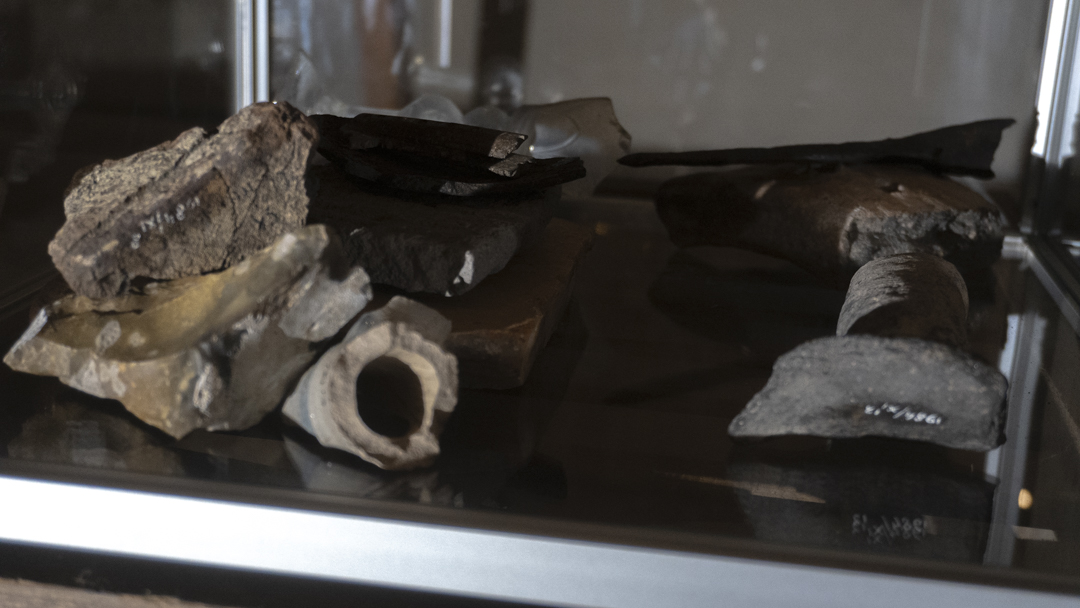
No. 2a: Slutty Knowing
I show up at the lecture with two hickeys on my neck.
We had been kissing all night…
He asked me not to leave visible marks on his body;
My corpus contains some remains of human life.
I’m living / identify me
What does a promiscuous historian look like?
Who wants to kiss?
The academic begs us to separate
knowledge production from sexual consumption;
I had good thoughts while he was into me.
We discussed being indiscriminate.
The lecture, as a format, only connects
to the intellectual part of the brain;
Producing a strongly limited epistemological space.
I want to speak from my thalamus, which
relays erotic stimuli incoming from the spinal cord.(4)
How can historic knowledge production expand itself
to include and corroborate slutty epistemes?
My friend told me her sex lingers in the morning after;
Shows itself in little scratches, scars or smells that jump at her out of nowhere.
What kind of history is that?
No. 2b: 1770-720 (G)
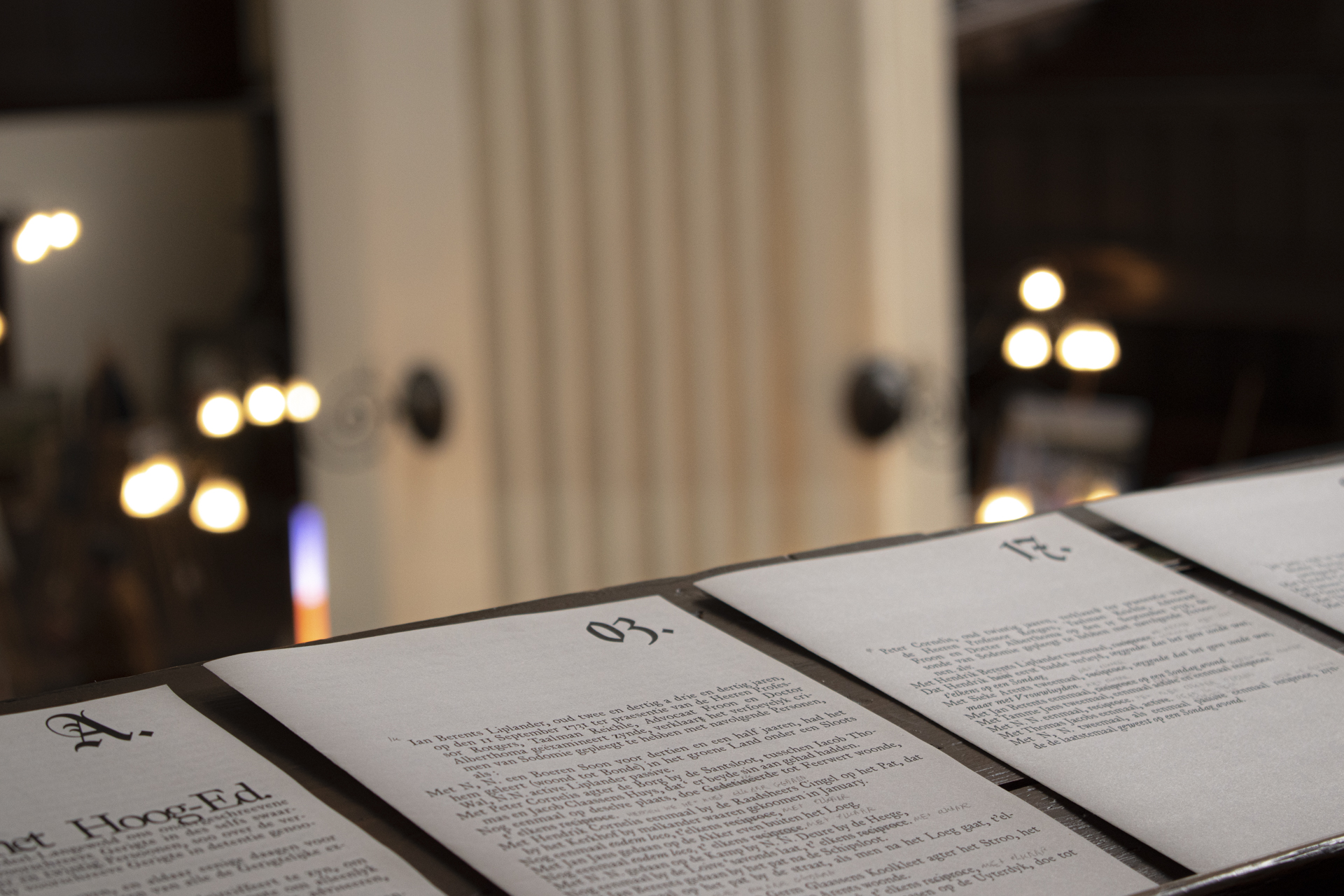
In my performance 1770-720 (G), which took place in September 2022 at the Aa-Kerk groningen, I worked with a booklet from the sodomy process. The pamphlet contained extensive diagrammatic descriptions of the sexual acts that were carried out by the suspects. Those descriptions were produced by means of intense durational torture. They take the sexual adventurous pleasures of the convicted, and impose the jurisdictional and surveillant gaze on them. It reminds us of the many current right-wing politicians who can't keep their fucking noses out of our bedrooms (they must get really turned on by this). In an effort to confront this text with the theologically homophobic rhetoric that catalysed the processes, I brought it in the church as an archive. Throughout three days, I channeled the ghosts of the convicted and spoken their confessions in the first person, in a very ambiguous act of reclamation. I ended this haunting series of declarations with lip syncing to Beyoncé's Summer Renaissance in the center of the church.
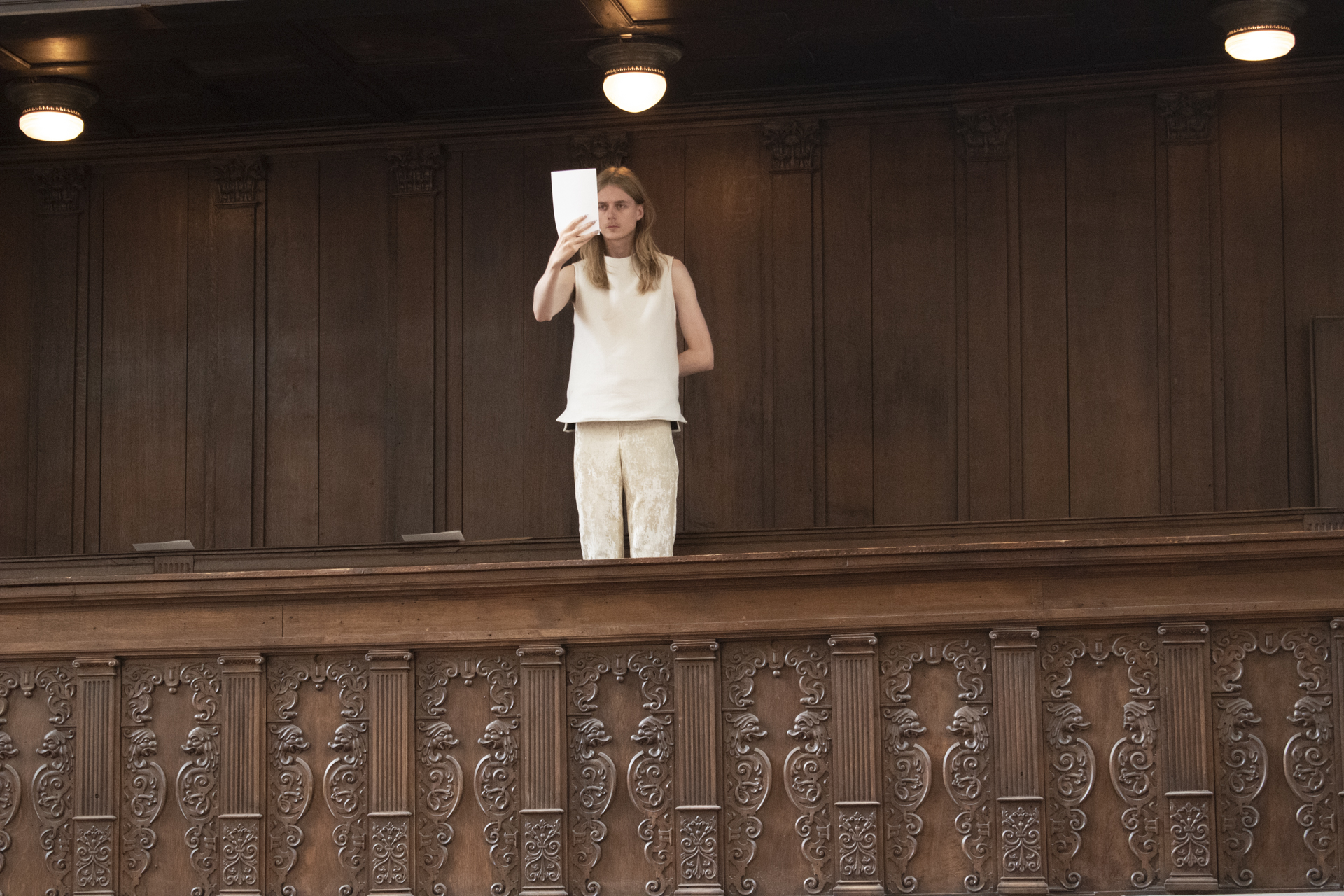
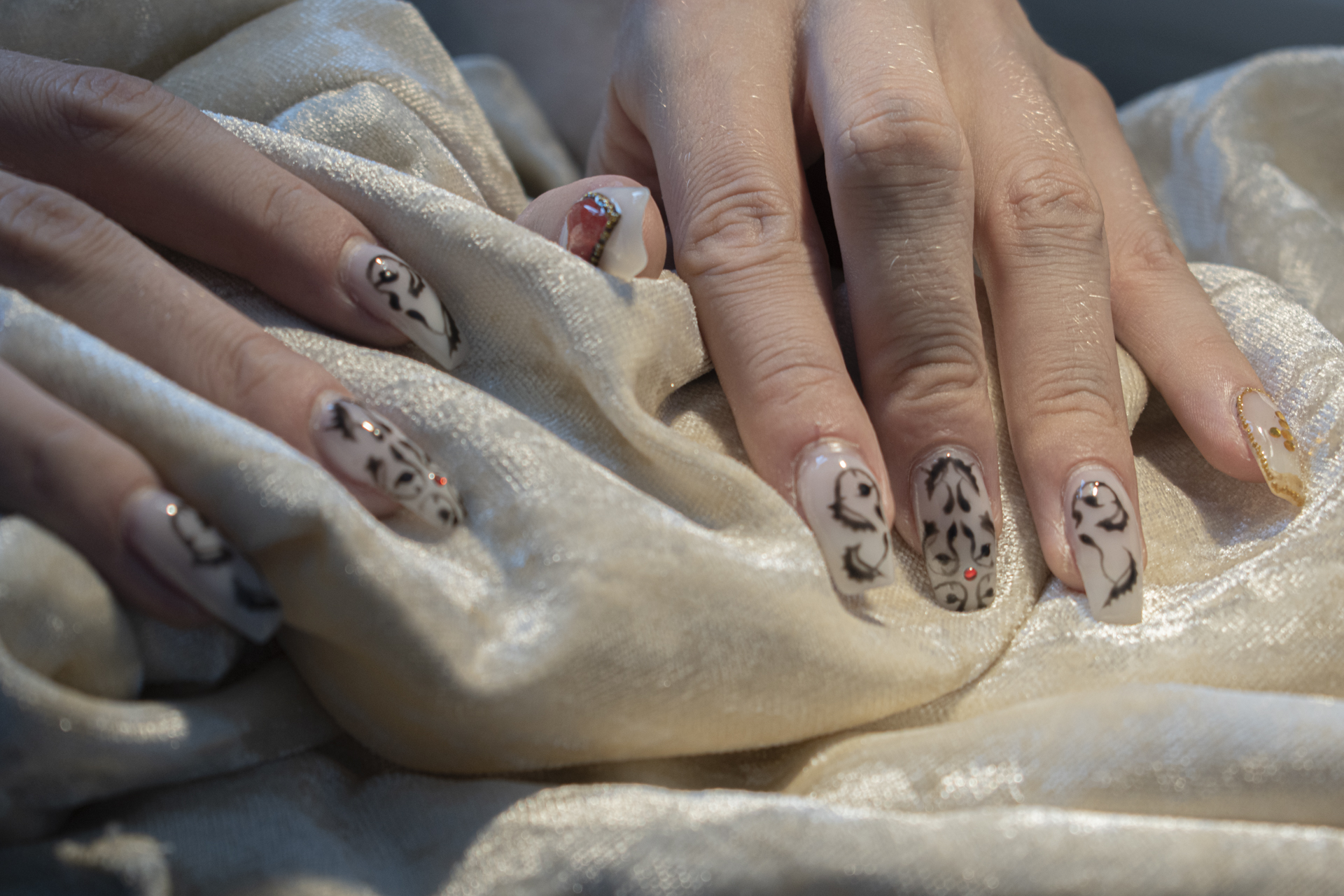
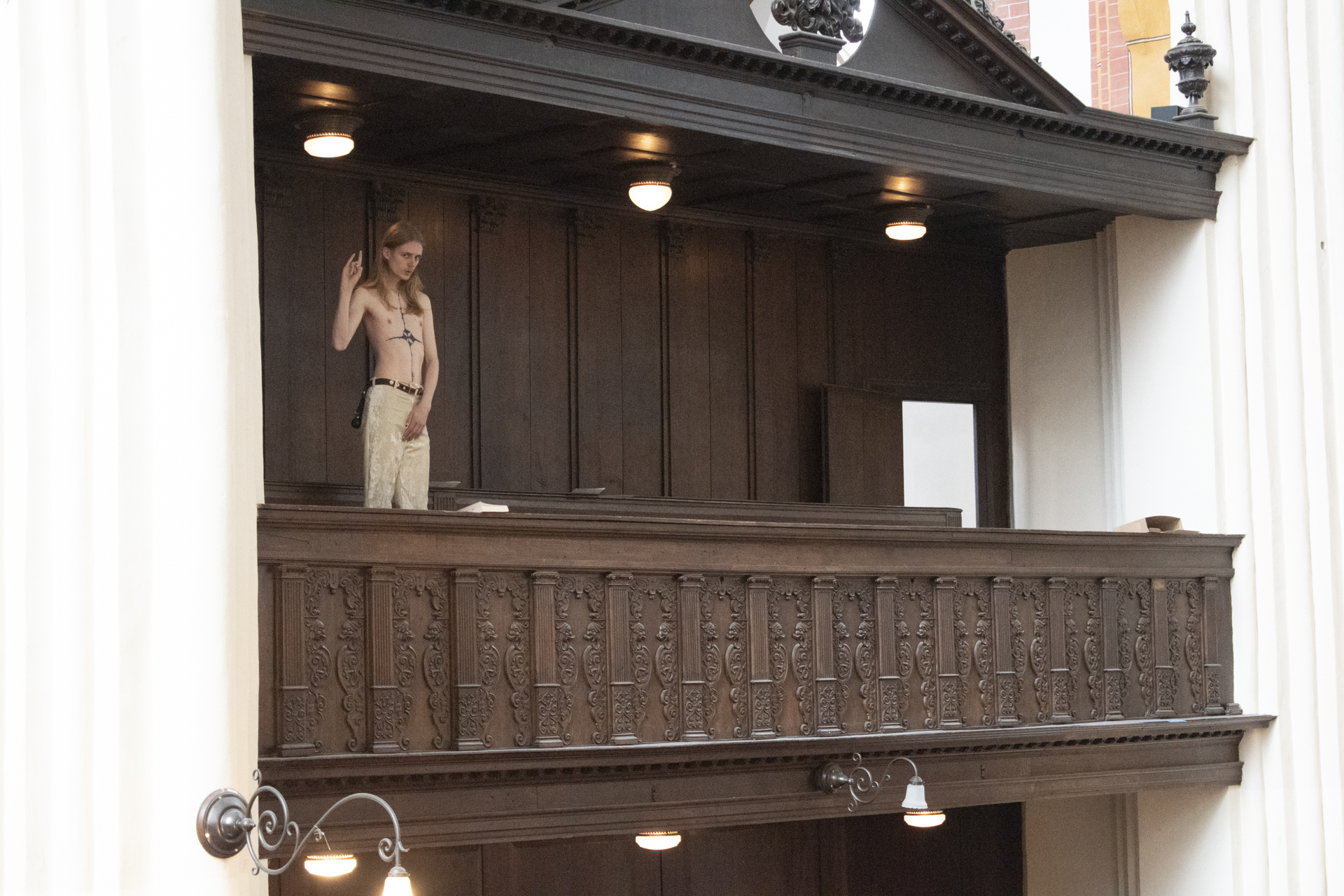
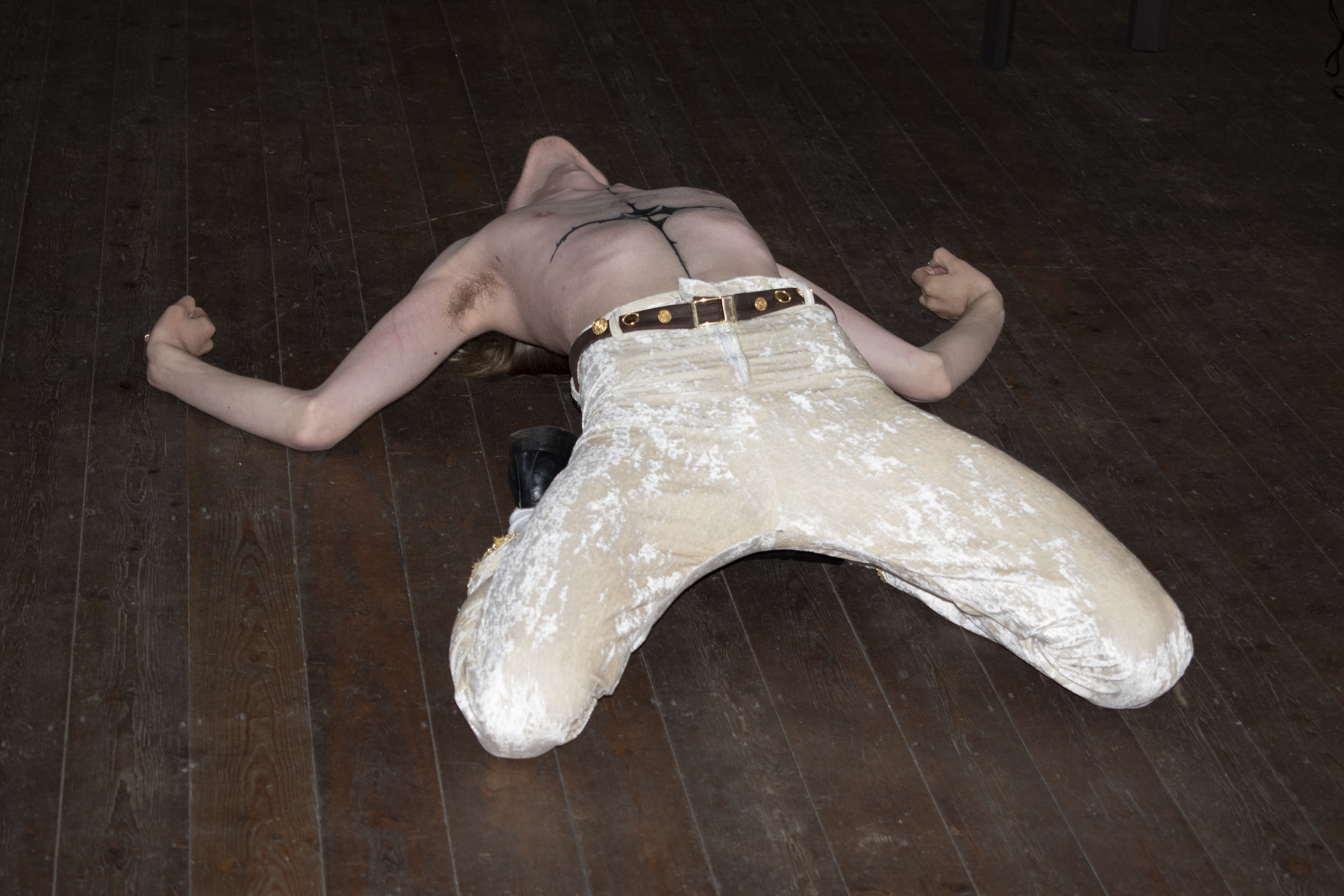
No. 3a: Many Knowing
In my opinion, knowing is not an individual matter - it's something one does together in solidarity and alliance with other people. I find it most effective to conduct my research in conversation with differing forms of knowing. I find it urgent to invest in collaborating with queer, crip and decolonial ways of thinking and making knowledge. Anthropologist Arturo Escobar writes that we cannot solve our multiple current crises while staying in our Western frame of thought:
(...) we are facing modern problems for which there are no longer modern solutions. Ontologically speaking, one may say that the crisis is the crisis of a particular world or set of world- making practices, the dominant form of Euro-modernity (capitalist, rationalist, liberal, secular, patriarchal, white, or what have you), or, as already mentioned, the [One-World World] — the world that has arrogated for itself the right to be “the” world, subjecting all other worlds to its own terms or, worse, to nonexistence. If the crisis is largely caused by this O.W.W. ontology, it follows that addressing the crisis implies transitioning toward the pluriverse
a world in which many worlds fit.(...) the diversity of the world is infinite; succinctly, the world is made up of multiple worlds, multiple ontologies or reals that are far from being exhausted by the Eurocentric experience or being reducible to it.(5)
In order to deal with our many crises, and make ways of knowing that are manifold, I must unlearn the European genocidal arrogance I have been raised with, and become open to different ways of knowing, being, and making. I aim to make this process happen by consolidating intersectional, interdisciplinary and intergenerational alliances.
No. 3b: The Poison of the Other
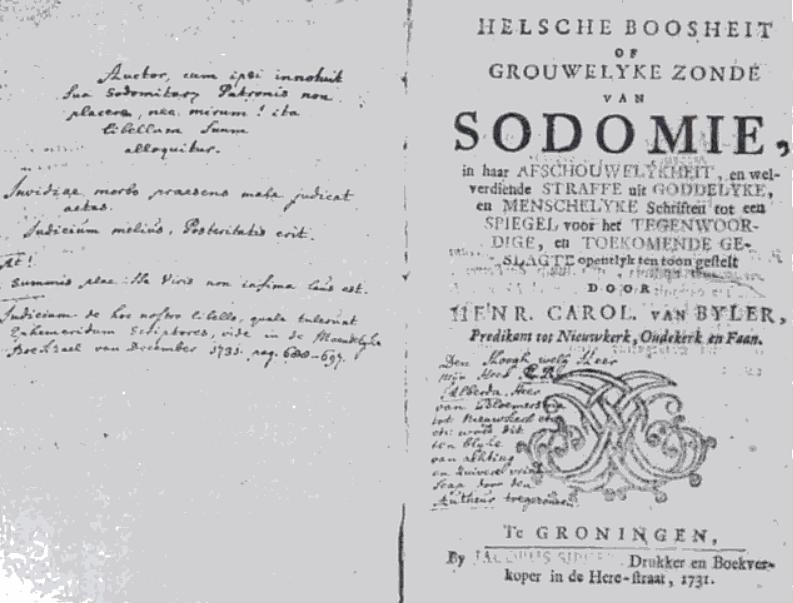
My publication The Poison of the Other (2022) works with the book Helsche Boosheit (1731) by protestant preacher Henricus Carolinus van Byler. Besides his frequent preachings during the process, his book was a vital rhetoric device which morally reinforced the sodomy processes. The book expands on the origins of Sodomy, as well as proposing legal prosecution, lest God will not punish our beautiful country. Chapter D contains descriptions of Sodomie by Andere VolkenSodomy in other people's, discussing a.o. the Jewish, Greeks, Italians, Spaniards, Asians and Germans. Throughout the chapter, van Byler xenophobically argues that the sin of Sodomy is not of this country, and has been brought in from Italy and Turkey. Not dissimilar to Pim Fortuyn, he conceptualises the (muslim) immigrant as a disruptor of the local sexual order, in this case bringing homosexuality inside the country.

While the Helsche Boosheit was discussed earlier, this was mostly done by white, male academics. If they were gay, their texts did not show it. I thought that specifically in this chapter, which manifests an early Dutch orientalist xenophobic logic, it would be useful and enriching to invite queer migrants to talk about the contents in the book. I invited three queer migrant friends coming from muslim-majority contexts (Kurdish, Indonesian, Syrian) to discuss selected quotes from the chapter, in combination with critical race theory texts like those of Gloria Wekker and Jasbir Puar. The publication shows a result of this conversation.
No. 3c: Class
In order to prepare my earlier-mentioned installation Assemblies, I made a video in conversation with a primary school class. Together with artist/educator Paula Biemans, I developed a class where they made highly speculative archaeological interpretations of the materials.
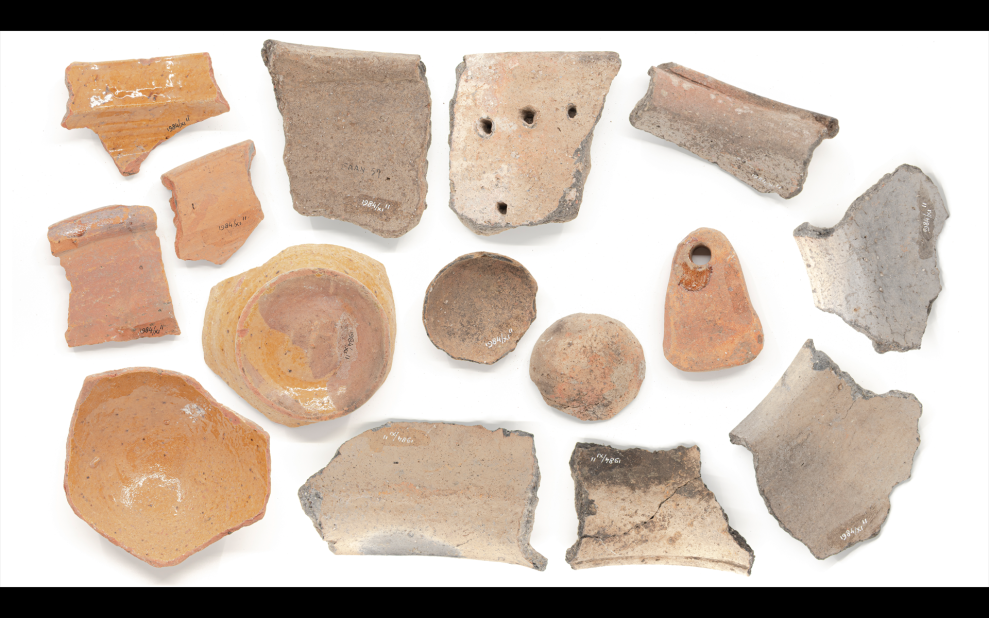
I started by making a selection of the findings, and printing out images. Each kid selected one artefact, and made a drawing copying the material as closely as possible.
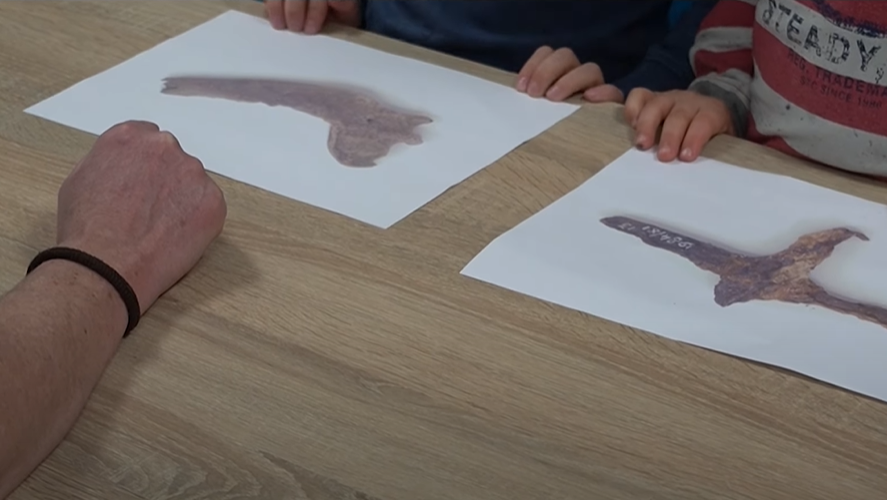
After drawing the attenuative copy, the kids were asked to make a speculative interpretation of the materials. They expanded their drawing to envision how the object could have been part of a bigger whole.
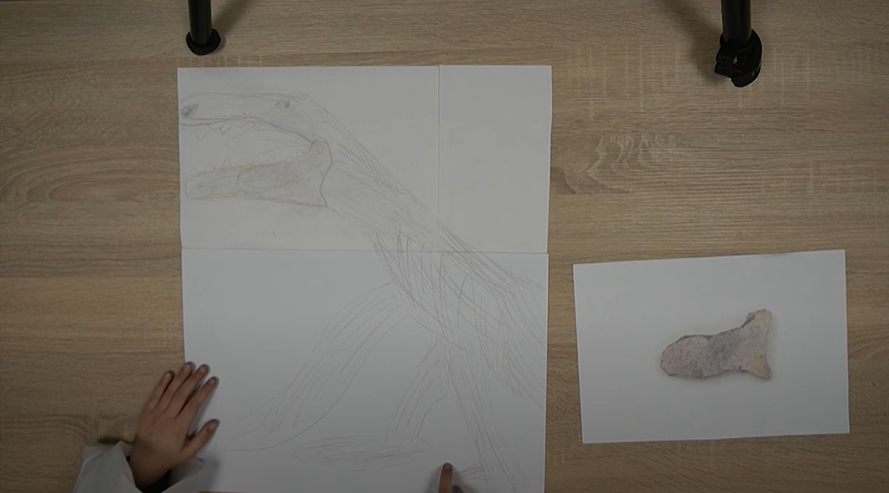
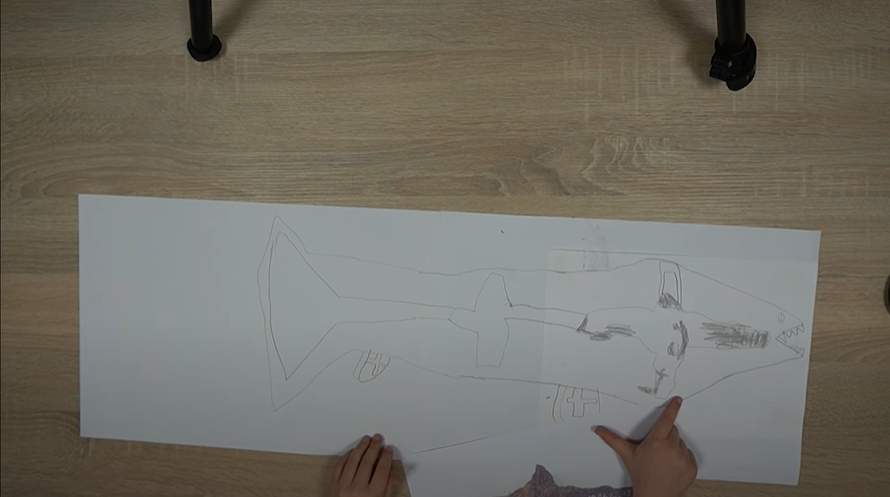
By inviting the kids to speculate on the origin of the archaeological artifacts, we invited a young and imaginative perspective into the archaeological research. This helped to prompt the magical and narrative side of the knowledge-reconstruction. After the drawings were done, I cut them out and the kids selected a spot in the exhibition to place their interpretations.
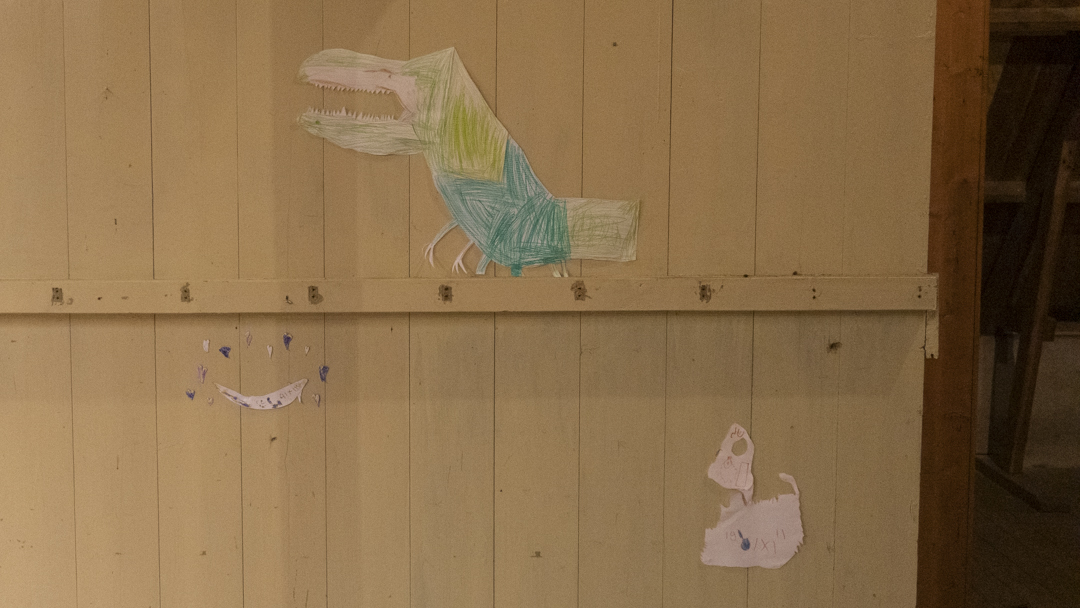
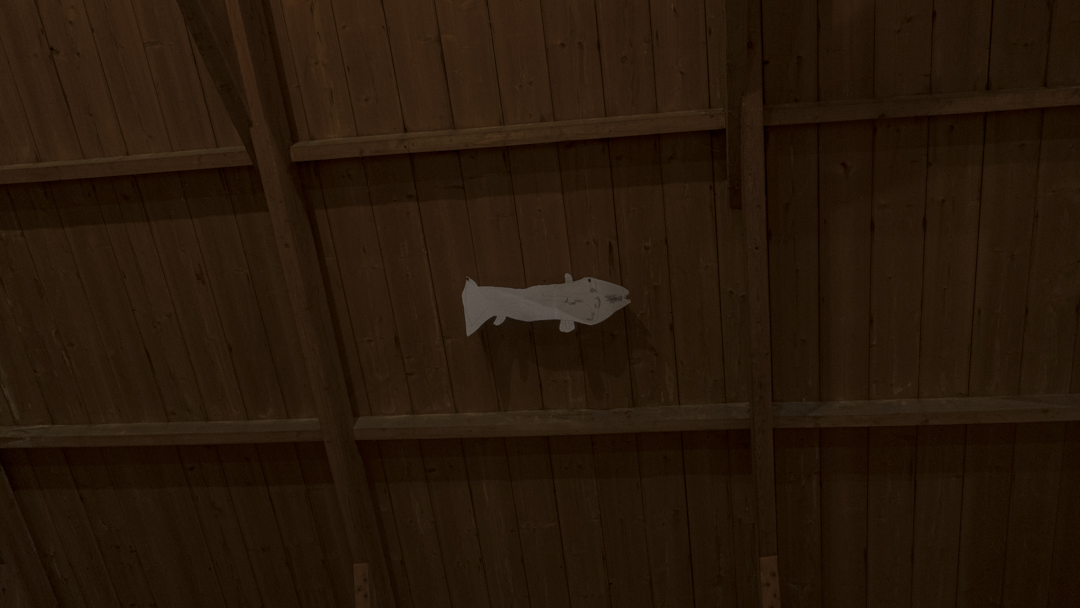
- (1) Borrowing this term “the not-yet” from Jeanne van Heeswijk
- (2) Sara Ahmed, On Being Included: Racism and Diversity in Institutional Life, Duke University Press, 2012, p. 21
- (3) Jack Halberstam, The Queer Art of Failure, Duke University Press, 2011
- (5) Arturo Escobar, Designs for the Pluriverse, Duke university press, 2008, p67